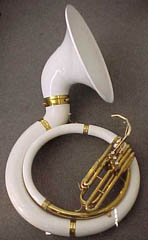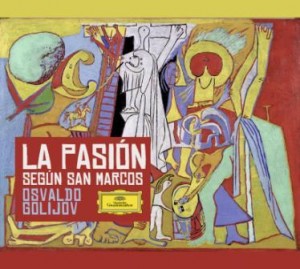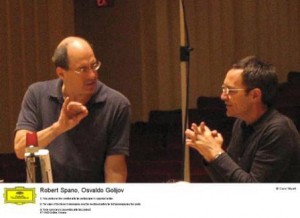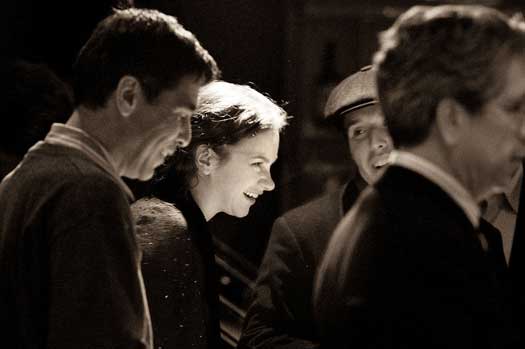[Ed. note — Our long-time contributor Steve Hicken is usually to be found helping out in the CD review section of S21. But a recent shipment of a number of band music CDs prompted Steve to group them together as a larger essay, and we thought it should end up here on the main page. Recordings discussed in this essay: BARNES: Symphonic Overture; Fantasy Variations on a Theme by Nicolo Paganini; GERSHWIN: Rhapsody in Blue (Hunsberger, arr.); Overture on Themes from Porgy and Bess (Barnes, arr.); REED: Ballade. Raimonds Petrauskis, p; Oskars Petrauskis, a sax; RIGA Professional Symphonic Band/Andris Poga. PPOR-CD002 — GRAINGER: Band Music. Dallas Wind Symphony/Jerry Junkin. Reference 117 — GRAINGER: Transcriptions for Wind Orchestra. Ivan Hovorun, p; Royal Northern College of Music Wind Orchestra/Clark Rundell. Chandos 10455 — CORIGLIANO: Circus Maximus; Gazebo Dances. University of Texas Wind Ensemble/Jerry Junkin. Naxos 8.559601]
 Tragic but true: when the smoke had cleared, the new music wars had been won not by towners up or down or coasters east or left, but by a rear guard of trained symphonic band composers from big state universities in the middle of the country. — Daniel Wolf
Tragic but true: when the smoke had cleared, the new music wars had been won not by towners up or down or coasters east or left, but by a rear guard of trained symphonic band composers from big state universities in the middle of the country. — Daniel Wolf
According to the American Bandmasters Association (ABA), there are some 40,000 bands in the United States.1 Almost every high school, most junior high or middle schools, and many elementary schools have at least one band. On the college level, the situation is one of even more abundance—just about every college has more than one band, and the big public institutions have a handful or more. In addition, many municipalities have amateur bands, and some larger cities have professional wind orchestras.
Given these numbers and the exceptional quality of USA wind and percussion playing, you would expect that bands would be at the center of concert music in America. In reality, band music runs on a parallel track to the rest of concert music, and it has for a long time.2 There are stars in the world of band music, just as there are in the rest of concert music. These stars tend to be the conductors of the top bands at the big public universities of the Big 10, Texas, the west coast, and a few places in the Southeast, and composers at most of the same institutions, as well as a handful of composers making a living as freelancers. More about these composers later.
The music played by these bands falls into three very broad categories:
Marches! — To a very great extent, the wind band began as a military unit, designed to play music for armies to march to. There is evidence of ensembles consisting of what we call brass instruments and drums playing martial music in ancient civilizations in both the east and the west. Much of the music played by these groups was in reality signals, such as “charge”, “reveille”, etc. By the seventeenth century the instrumentation of what we now consider the standard military band had begun to settle, with the development of the position of the “drum major” whose function was to keep the soldiers marching in time.
As the instrumentation became fairly standard, more and more music was written for these bands to play. And most of this music was for marching. Tempos are within a certain range (mostly quick), phrases are clear, melodies stirring and carried, for the most part, by the flutes and clarinets. The march tradition is so deeply ingrained in the band world that many band directors wouldn’t dream of beginning a concert program with anything but a march.
Transcriptions or arrangements — A transcription is a note-for-note translation of a piece from one kind of instrumentation to another. In the case of band transcriptions, the vast majority of these are orchestra-to-band transcriptions. In these pieces, flutes, clarinets, and sometimes oboes, substitute for violins, and lower woodwinds for the lower strings. Solo instruments from these same choirs take the same roles as their orchestral counterparts, and the brass and percussion tend to have the same roles as they do in the original compositions.
A sizable number of orchestral works that have been transcribed for bands comes from the late Romantic period through the early part of the 20th century. From Dvorak to Shostakovich, symphonies and other orchestral works have provided grist for the transcriber’s mill. An important reason for this is that the winds in the original works (like Dvorak’s “New World” Symphony and Shostakovich’s Fifth Symphony) had important roles and recasting this music for winds is not as radical a change as it would be in most, for example, Beethoven. Arrangements consist in taking pre-existing pieces of music (usually popular or Broadway tunes) and orchestrating them for the available forces (in this case, a band), usually as a medley, with newly-composed connecting material. There isn’t a rigorous line between transcriptions and arrangements, but it seems to me that the adding of this connecting material is a crucial distinction.
The third large category is that of original compositions.3 Igor Stravinsky, Gustav Holst, Arnold Schoenberg, and Paul Hindemith were among the many major early 20th-century composers who wrote music for band. As the century progressed, however, band composition came to be a specialty — people that wrote band music tended to write little else, and people who were not band composers never touched the medium.
(more…)







 Composer
Composer  Our own Lawrence Dillon’s The Infinite Sphere will be given its World Premiere performances by the Daedalus Quartet tonight, Friday, January 15 – 8 PM as part of the Discovery Series at The Barns at Wolf Trap in Vienna, Virginia and on Saturday, 7:30 PM at Watson Chamber Music Hall of the University of North Carolina School of the Arts in Winston-Salem.
Our own Lawrence Dillon’s The Infinite Sphere will be given its World Premiere performances by the Daedalus Quartet tonight, Friday, January 15 – 8 PM as part of the Discovery Series at The Barns at Wolf Trap in Vienna, Virginia and on Saturday, 7:30 PM at Watson Chamber Music Hall of the University of North Carolina School of the Arts in Winston-Salem.